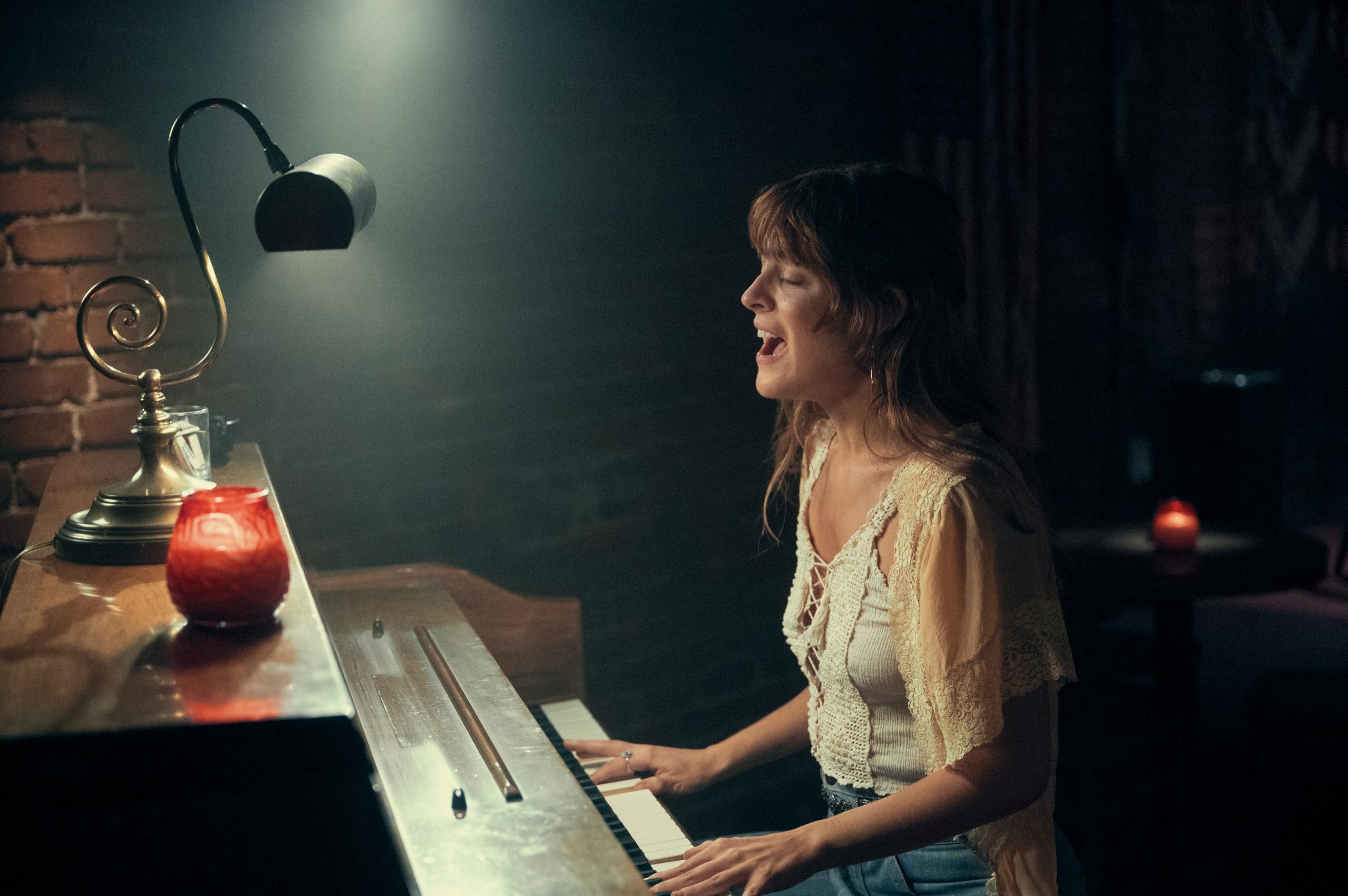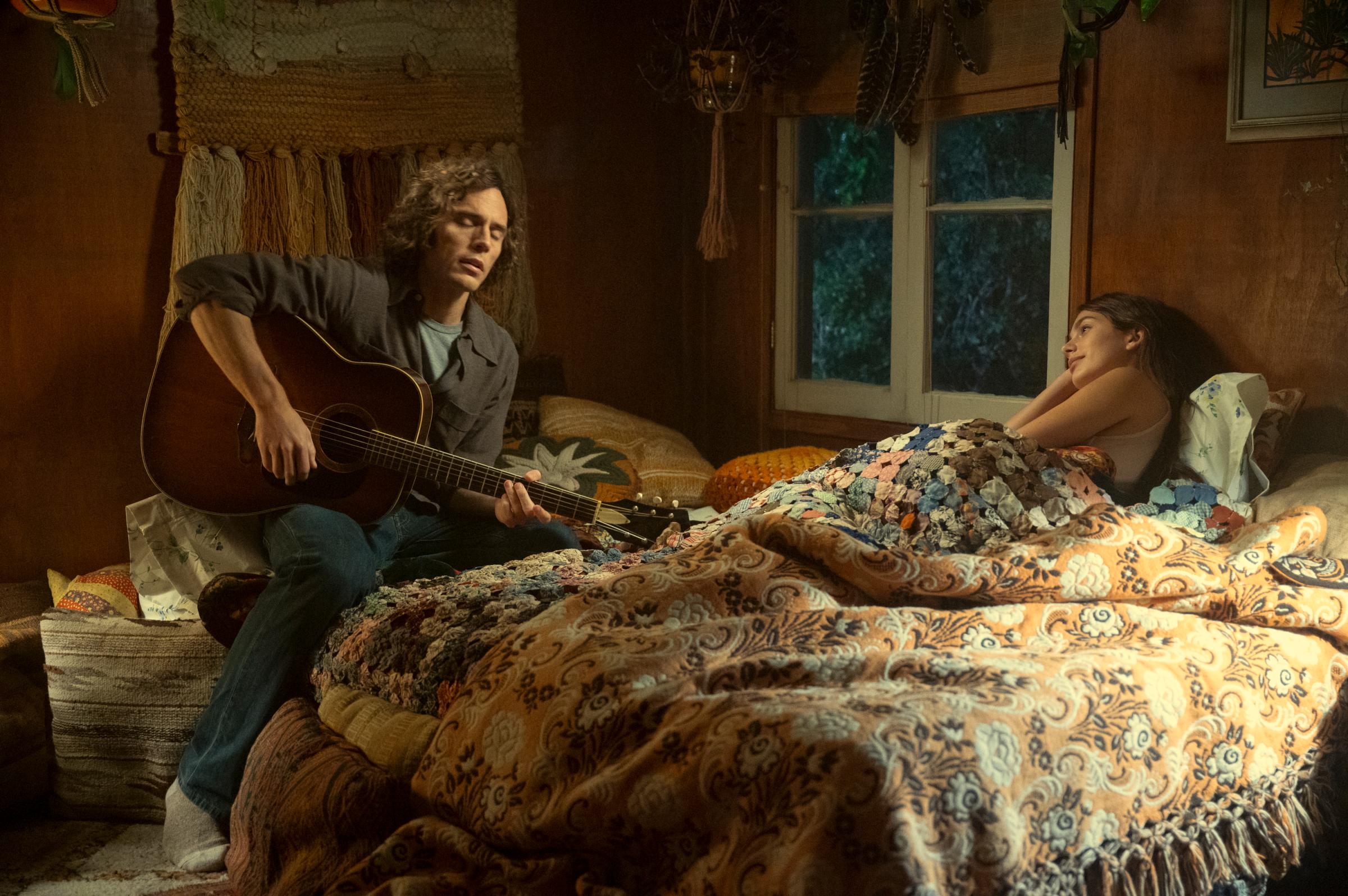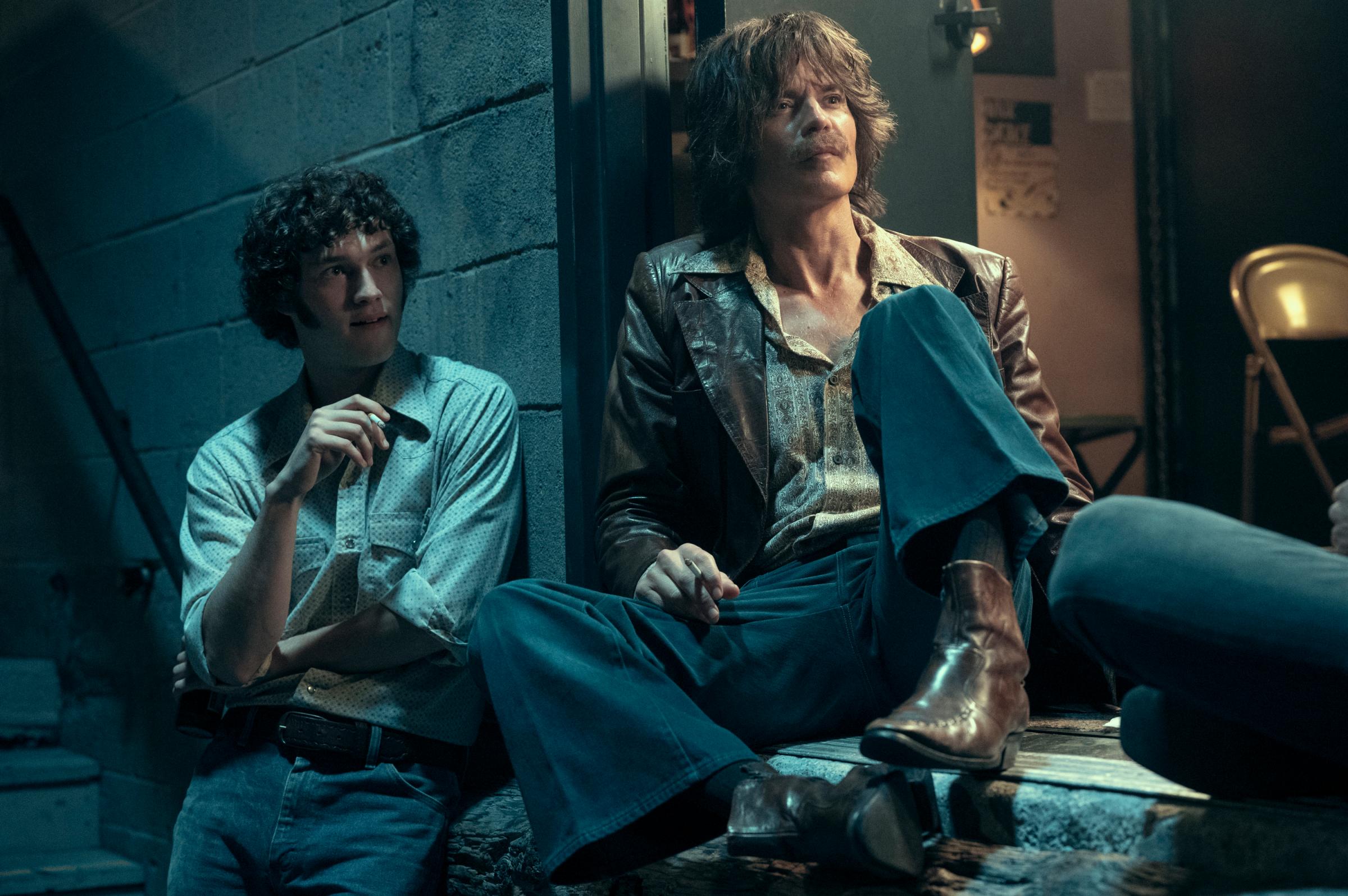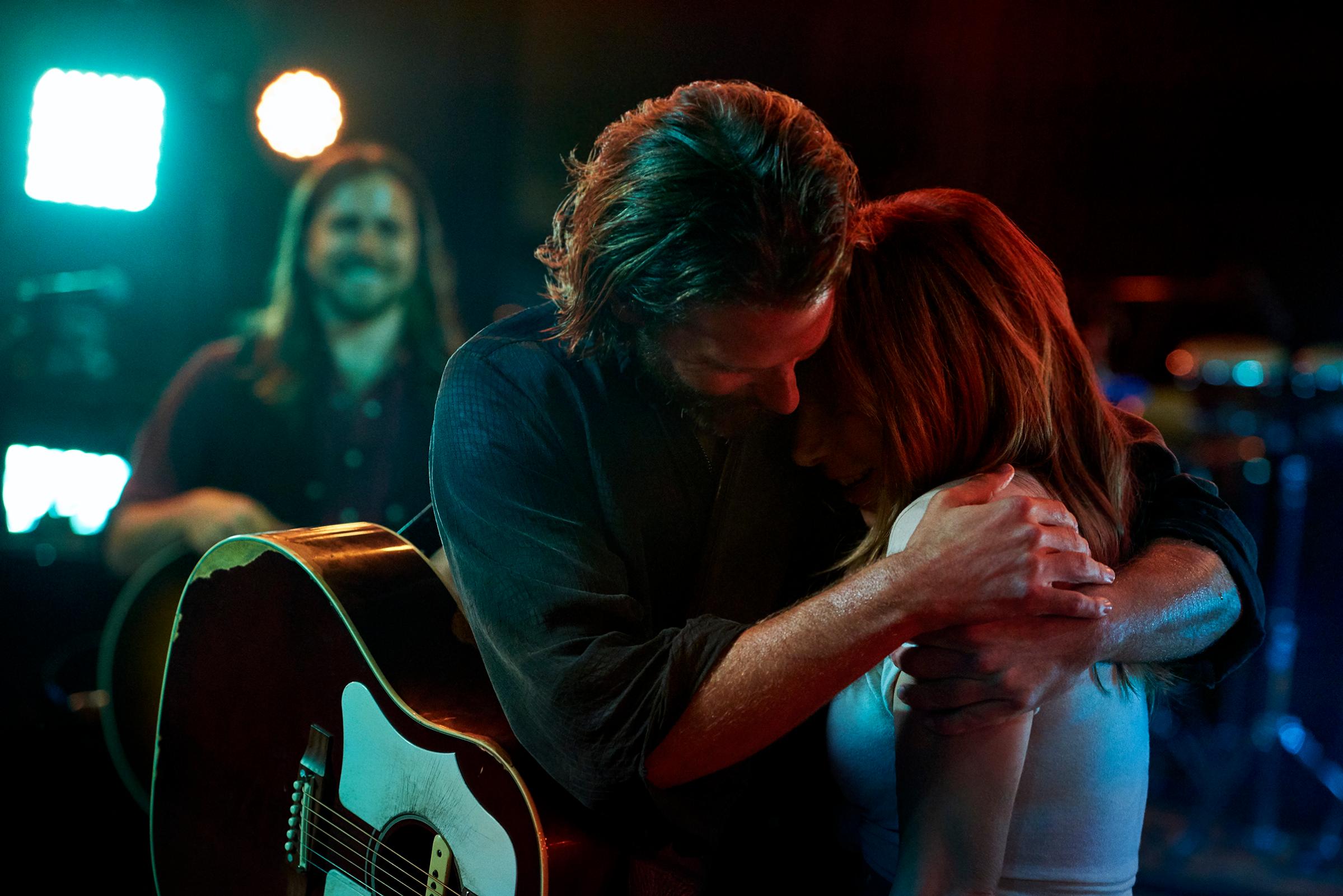Ask ChatGPT to “write a fictionalized biography of Fleetwood Mac in the style of an oral history,” and the bot will respond with a flurry of hilariously realistic clichés about the “wild ride” that is rock stardom. “We were making records that people really connected with,” says one imagined band member. “It was a wonderful feeling.” Another observes that “the success was great, but it also came with a lot of pressure.”
This uncanny-valley conversation could’ve been ripped from the pages of Taylor Jenkins Reid’s 2019 novel Daisy Jones & the Six. Structured as an oral history and openly influenced by Fleetwood Mac’s tumultuous romances, it traces the slow rise and abrupt combustion of a 1970s L.A. rock band. “I felt connected to them in a way that I hadn’t felt connected to anyone before,” Stevie Nicks analogue Daisy Jones recalls, of a crowd at one show. Hedonistic drummer Warren explains that being “at the top” isn’t always fun because “that’s when you’ve got the pressure.”

With its unusual format, retro glamor, and characters both inspired by real people and generic to rock lore, Reid’s book is a vibe, a mood, an aesthetic (Canyoncore?). Figure in the will-they-or-won’t-they tension between Daisy and the Six’s married leader Billy Dunne, and you’ll understand its enormous appeal to the romance mavens of BookTok, who helped Daisy Jones sell more than a million copies. Now the book is back on best-seller lists in advance of a TV adaptation debuting March 3 on Amazon Prime Video.
Read More: What to Know About the Book That Inspired “Daisy Jones and the Six”
Produced by Reese Witherspoon’s Hello Sunshine—a company known for transforming buzzy books like Big Little Lies and Little Fires Everywhere into small-screen smashes—and starring genuine rock royalty—Elvis’ granddaughter Riley Keough—the 10-part musical drama reportedly spared no expense. The New York Times inventoried its wardrobe (250 ensembles a night at one point), music (25 original songs with input from Phoebe Bridgers, Marcus Mumford, and more), and publicity machine (at least 30 flacks). Yet the series is more hollow and hackneyed than the novel. Not that this makes either incarnation a rarity among stories about musicians. Shallow portraits of pop genius are the norm across narrative art forms, which are poorly equipped to capture the ineffable qualities of music, and whose creators so often seem to be working backwards from larger-than-life personas instead of real people.

Framed as a documentary looking back on Daisy Jones & the Six two decades after their onstage implosion in 1977, the show begins like most episodes of Behind the Music—with the protagonists’ rough childhoods. “No one wants to hear your voice,” poor little rich girl Daisy’s mother hisses when her daughter’s singing interrupts a party. Billy (Sam Claflin), a working-class Pittsburgh dreamer, fronts his younger brother Graham’s (Will Harrison) high school garage act as a favor but gets serious about music after a heartbreaking run-in with their estranged father.
The show barely fleshes out the other people in the Dunnes’ bluesy band. In Eagles terms, bassist Eddie (Josh Whitehouse) is the bitter Don Felder to Billy’s Glenn Frey. Warren (Sebastian Chacon) digs partying, chicks, and partying with chicks. Keyboardist Karen (Suki Waterhouse) is a slightly more layered character in that she underplays her beauty in order to be taken seriously in a sexist industry. The adaptation cuts the lineup from the book’s six to five, which is only a problem because the band is still called the Six.

Brought in by ace producer Teddy Price (Tom Wright), Daisy meshes and clashes with Billy immediately. If only the show, like the book, didn’t emphasize to the point of redundancy the way Daisy, a casual drug abuser, mirrors Billy, who gets sober after his alcohol-fueled infidelity on an early tour nearly loses him his ride-or-die wife (Camila Morrone) and baby daughter.
Adapted by (500) Days of Summer writers Scott Neustadter and Michael H. Weber, Daisy Jones does hit a few high notes. Keough grounds what could’ve been an ethereal sad girl in intelligence and drive—but in a choice that suggests A Star Is Born was on the show’s mood board, Claflin’s Billy is nothing but a human wince. While the wigs are awful (pity Timothy Olyphant as a fluffy-haired manager), the costumes dazzle. There’s no “Shallow”-level single, but songwriter Blake Mills salvages cringey lyrics from the book with arrangements that vary from whispery folk to pop-rock in the Rumours mold.

Sadly, Neustadter and Weber also ratchet up the drama with more cheating, more self-destruction, more conflict—changes that erase all preexisting nuance, including Reid’s shrewd divergence from tired female-rivalry story lines. The acting is uneven. Scripts maintain the book’s silliest platitudes and reinforce its strange misconception that 95% of songwriting is scribbling lyrics in a notebook. Crowd scenes look shoddy. Characters constantly marvel at the greatness of live performances that don’t come across as particularly special.
Pop music, at its best, traffics in a messy form of transcendence. It’s the clattering percussion of drumsticks tapping a Coke bottle in the Dixie Cups’ “Iko Iko,” the tremor in Patti Smith’s voice on “Dancing Barefoot,” the wistful way Nicks elongates the word “home” in “Gold Dust Woman”—to borrow a few Daisy Jones needle drops. Story is tangential to feeling, which makes writing good fiction about the alchemy of rock even harder than dancing about architecture. (At least dance and architecture are both non-narrative art forms.)

Reid, Neustadter, and Weber are hardly the first creators to struggle with this challenge. Salman Rushdie and Jonathan Lethem wrote their most self-indulgent novels (The Ground Beneath Her Feet and You Don’t Love Me Yet, respectively) about musicians. Co-creators Martin Scorsese and Mick Jagger couldn’t save HBO’s Vinyl from the absurdity of scenes like one where a white record executive accidentally witnesses the birth of hip-hop.
The best pop stories approach music’s mythos differently. Sometimes they spoof the idea of genius, as This Is Spinal Tap so famously did. Sometimes they evade it. Fox’s Empire, which recreated King Lear succession drama at a hip-hop record label, was a show about power more than art. Cameron Crowe’s beloved 2000 film Almost Famous is really a coming-of-age story, more memorable for giving us Billy Crudup screaming “I am a golden god!” from a rooftop than for anything his band did onstage.

It’s rarer—and much harder—to do justice to the magic of music-making. For the most recent edition of A Star Is Born, one standout song and two passionate performances yielded a solid facsimile. Series like HBO Max’s Rap Sh!t and Peacock’s We Are Lady Parts, which follow young, female artists launching careers outside the mainstream, thrive on the ecstasy of collaboration. Todd Haynes, the filmmaker behind two brilliant portraits of musical genius—prismatic Bob Dylan biopic I’m Not There and Velvet Goldmine, which fictionalizes glam-era Bowie—filters rock innovators through the life-altering fantasies they inspire in their fans.
Short on imagination and (intentional) humor, Daisy Jones tries with painful earnestness to capture an inchoate love between two geniuses making a classic album. It’s a tightrope walk on a wire made of dental floss. The only possible way to make it work is through protagonists built from scratch, rather than sanded down, as Daisy and Billy are, from public images made colossal by decades of breathless media coverage, industry lore, and fan worship. Formulating a generic, alternate-universe Fleetwood Mac is a project for AI. Human artists, capable of sublimating real emotion and experience, have got to do better.
More Must-Reads from TIME
- Cybersecurity Experts Are Sounding the Alarm on DOGE
- Meet the 2025 Women of the Year
- The Harsh Truth About Disability Inclusion
- Why Do More Young Adults Have Cancer?
- Colman Domingo Leads With Radical Love
- How to Get Better at Doing Things Alone
- Michelle Zauner Stares Down the Darkness
Contact us at letters@time.com